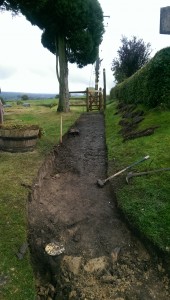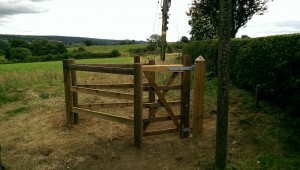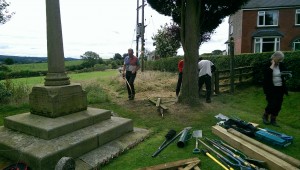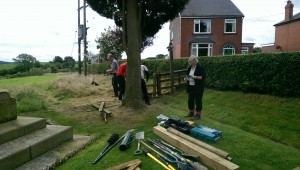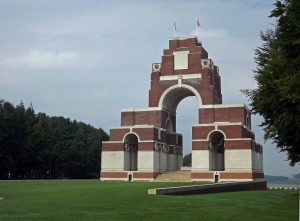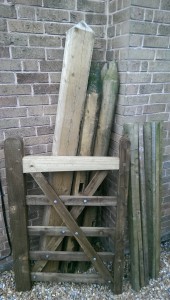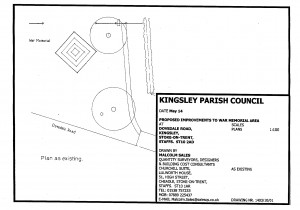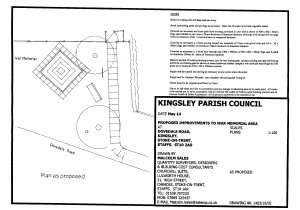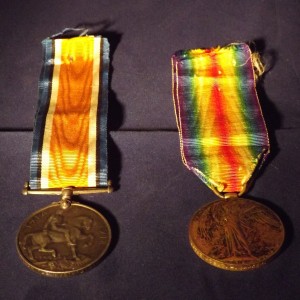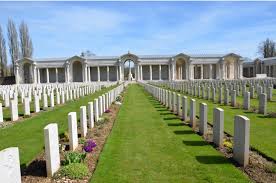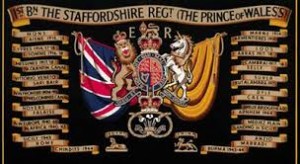One of the many positives of the project is that names become more than just letters on a memorial or tablet. They become people who lived in houses in the parish many of which are still standing and some are still the homes of their descendants.
They were members of the Reading Room (now Village Hall) or went to St Werburgh’s school or were married in the church.
We have been privileged to have met some of the descendants of these men and we hope that the project is a fitting tribute to them a century or so later.
One such descendant is Janet Walton and her husband Phillip – Edward was Janet’s great uncle and we have been very lucky to be able to have access to the family history they have uncovered which includes letters written by Edward whilst serving with the army. They have been transcribed for us and are reproduced below.
They provide a contemporary account of a soldiers life in the army and the last letter was written 3 weeks before his death and refers to Lt Sloan who died in an action that was referred to in our account of Edward elsewhere on this site.
We have another set of letters written by Earnest Upton and our grateful to a volunteer who will be transcribing them in the coming weeks.
To read our post on Edward click here
Post Card written 9th November 1916
Dear Fred Thursday
Just a few lines to say that I am going on alright and have very near over-got the cold that I had. I was pleased to see you all looking so well at Kingsley and I think father looks quite well again now. More like himself than he did when I was over before. I got back to Braintree a lot sooner than I thought I should, for the trains run very well to this place. I got to London at 4 O’clock and had just nice time to cross and catch the 5 o’clock to Witham. We got to Witham at 6 o’clock and arrived at Braintree at 25 minutes past six.
Trusting you are all feeling well.
With love to you all, Ted.
Witham YMCA Hut Postcard date unknown but around 9th November 1917
Dear Fred, Friday.
I am at Witham for about a week. This is a photo of the YMCA Hut there. I am going on well.
With love to you all,
Ted.
Hoping to see you shortly.
Letter dated 9th December 1916
Pte. E.E.Bradshaw 4183
2/6th Scottish Rifles,
20th Infantry Base Depot,
S17 Army Post Office,
B E F,
France.
Dear Annie, Dec. 9th 1916.
Just a note to say that I am going on well out here.
For we are not doing any more work than we did in England.
I had a very good voyage across the sea and I quite enjoyed it; of course there were a few seasick.
We are having a lot better food than we had in England – always roast meat for dinner, and bacon for breakfast, and jam and bread for tea, but not quite enough to make you feel full.
It is washing day today and we have to wash all our own clothes, and they lay them in a place on purpose for drying clothes.
I think I shall wear the socks until they are worn out for I don’t think I shall mend socks, they can send me some socks from home. I don’t want good socks, and socks will do if they are very near worn out.
I have not been up to the fighting line yet, and may be a while before we go up.
I have plenty of friends out with me, a lot of Decent fellows.
We can get any sort of food at such places as the YMCA, it is very dear.
I don’t think the war will last much longer with Asquith giving up his job, and the sooner it is over the better, but we must trust in God and try to do all the good we can and leave the rest to Him.
The men out here are more religious than the people in England, I think.
The money out here is a bit funny to get into for the English shilling is worth ½ in France, and for 10 pence you get a piece of paper.
I think this is all this time.
Trusting you are all keeping well, as it leaves me very well.
With Love To You All,
From your brother, Ted.
Silk Post Card Dated Tuesday 16th January 1917
Jan 16th.
Dear Annie,
I received Gladys letter alright, but she had not very much news to tell me. Pleased to hear that she liked her silk card and hope you will like yours. We have not had much snow, only one day, and the sun took it away as it came down. Tell the people in Kingsley to send me a shirt and some Harrison Pomade as soon as they can. Things are much the same here.
Trusting you are all keeping well, as I am alright.
With love to you all, Ted
Letter dated Monday 22nd January 1917
France.
Jan. 22nd
I enjoyed the mince pie, if they were crusted.
Dear Annie,
Just a line to say I received your letter dated Jan 12th. I had been thinking, the same day that I received it, about you, and that I should receive a letter any time.
You would see by the letter I sent to George I had a quiet Christmas, but still I thought of being at your house last year and about Carol singing. I only heard one Christmas Carol sung this time, but we must trust in God and hope for a good one next time.
I often think when I hear the Church bells ringing here that I should like to hear them at Kingsley.
I have a lot of good friends in this battalion.
We can buy very near anything to eat, where we are at now, and I have plenty of money, so am taking no harm.
We are billeted in empty houses – very good billets they are.
I sent Annie a silk card last week – did she receive it alright? I don’t think the war will last much longer, for I think Germany is about finished, and will not fight this summer. If they did, I think they will be beaten. The men are tired of war, but all confident of beating the Germans.
It is a shame that I cannot receive more parcels from home, but think I shall get them alright. I have received 2 up to now – I received one today, dated Jan 11th.
Trusting you are all keeping well as it leaves me alright, and I shall be home in …? Sea soon.
With Fondest Love To You All,
Ted.
Letter dated Friday 16th March 1917
France.
March 16th 1917.
Dear Fred,
Many thanks for the John Bull, which I received each week for it is always very welcome by all the men, and they very near all read it.
I have received a parcel from the shop containing ham , bacon, a ??? with paper, cocoa, and one from Derby containing cake, so I have plenty to eat.
I also received your mother’s letter last week and was pleased to hear you are all going on well at home.
I am enclosing a silk card in this envelope, which I hope you will like.
We all hope the war will finish soon and we can all return home and live in peace again.
I know you must be a very useful lad to your Grand Father for he must be in the need of somebody to help him now he has not Billy.
I received a letter from the shop yesterday, but will try and write them tomorrow if possible.
I have plenty of Friends here and I could not be with a better lot of men than they all are.
I cannot write anymore as it is Lights-out. (In haste).
Trusting you are all in the Best of Health as it leaves AT.
With fondest love,
Ted.
Letter dated 1st May 1917
France.
May 1st 1917.
Dear Annie,
Just a line to say I am going on alright. I have not received any letters or parcels for about three weeks.
I have been down to the base with Lieut. Sloan, and that has taken almost a fortnight of the time.
My address is:
Pte. E.E.Bradshaw 41001,
9 Platoon, C Company
1st Cameronian Scottish Rifles,
BEF Army Post Office,
France.
You will see that it is 9 Platoon that I am in now.
We are having grand weather out here at the present time. I am sorry to tell you that Lieut. Sloan has had to have his left leg taken off. I have heard that he has gone very near his own home in Glasgow.
I don’t think the war will go on much longer for we seem to be beating the Germans all round now and I think everybody is tired of being at war.
I received Gladys’ letter which was dated April 2nd and that is the last I received from anybody.
With going down to the base, and receiving no parcel, it has taken more of my money than I have spent of a usual thing and I shall have to send home for money soon.
I think this is all the news this time. Hoping you will like the silk card.
Trusting these few lines find you all in the best of health as it leaves me quite well.
With fondest love to all,
Ted.
Note Lt Sloan in fact died in France on 28th April 1917 and Edward Bradshaw was to loose his life on 21st May 1917.
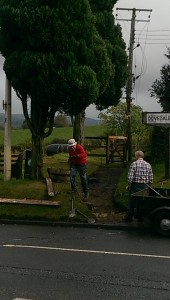 The Project Team are very pleased to announce that work has commenced around the War Memorial site on Dovedale Road. Initial works have seen the removal of quite an amount of soil and rubble to form the foundations of a pathway up from the pavement on Dovedale Road to the new kissing gate and also onto the memorial itself.
The Project Team are very pleased to announce that work has commenced around the War Memorial site on Dovedale Road. Initial works have seen the removal of quite an amount of soil and rubble to form the foundations of a pathway up from the pavement on Dovedale Road to the new kissing gate and also onto the memorial itself.
